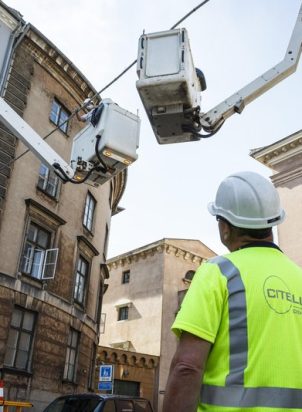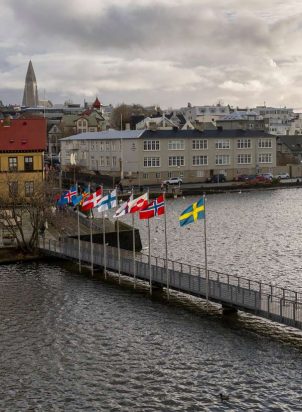In the Decade of Healthy Ageing (2020 – 2030), the COVID-19 crisis raises the stakes of active and healthy ageing practices across the globe. The lock-downs and physical distancing practices challenge daily life as we know it. In our bustling, densely populated cities the changes are enormous. And our older citizens are among those who are most affected.
This article shares insights from the ESPON ACPA study in light of the COVID-19 crisis written by Erik van Ossenbruggen &Thijs Fikken (Ecorys Netherlands ) and Mats Stjernberg (Nordregio). The article was originally published in ESPON magazine May 2020.
Today, the need for a long-term strategy on active and healthy ageing is more evident than ever. The fact that most regions in Europe have experienced significant population ageing in the last two decades, and that this trend will continue the coming decades, further underlines this notion. In ESPON ACPA researchers analysed policies and practices on active and healthy ageing in eight European cities: Greater Manchester, Amsterdam, Barcelona, Gothenburg, Hengelo, Nantes, Oslo and Zaragoza.
Older people and COVID-19
COVID-19 sheds new light on the outcomes of the study. It is evident that the virus hits older people the hardest. For example, in Spain, 90 % of the COVID-19 related victims are 65+ years old. The same applies to other countries studied in ACPA, such as France (91%), The Netherlands (94%), Norway (96% 60+), Sweden (95% 60+) and the United Kingdom (87%). Unfortunately, COVID-19 data on detailed geographical (urban) levels are not readily available for all the stakeholder cities and the relationship with settlement size seems to be complex. In some countries including Italy, the Netherlands and Spain, cities do not seem to be hit disproportionally. Also in France results are mixed: the city regions of Paris, Strasbourg, Lyon and Lille show the country’s highest related death rates, but other urban regions do not stand out more than their hinterlands. On the other hand, there is evidence for some analysed countries that the urban population is overrepresented in the death count, such as in Sweden, Norway and the UK. In the latter, Salford, a borough in Greater Manchester’s metropolitan area, ranks seventh in the top 10 of the UK’s 346 regions, based on the number of COVID-19 related deaths per 1.000 inhabitants.
What do we see around us? The role of digitalisation
Based on the characteristics of older people in cities, a couple of COVID-19 impacts on this population group can be observed. Firstly, we can see that older people form a disproportionally vulnerable target for the virus. Places such as care homes, where older people live together with many, seem to play an important role in the spreading of the virus. In many countries, the victims in care homes were originally not included in the official statistics, and pilots in France, Spain, Belgium and the UK suggest that official death rates are two to five times higher by including these deaths.
In cities, the situation could be worse as preliminary evidence suggests. Partly due to the larger population density in urban environments. This means that the physical distancing measures are paramount for older people. Digital tools play an important role here. COVID-19 is a catalyst for the use of digital tools to facilitate physical distancing. Sceptics claim they cannot replace face-to-face interaction. The COVID-19 crisis is pushing the frontiers of this assumption, and it proves we can do more than imagined through digital tools.
Recent statistics indicate that certain ethnic minority and migrant groups have been most severely affected by COVID-19. Among the countries studied in ACPA, this can be seen in at least the UK, Norway and in Sweden, where people with certain ethnic and socio-economic backgrounds are overrepresented in the number of COVID-19 cases and deaths. This is manifested spatially amongst others in Oslo (Gamle Oslo borough) and Stockholm (Rinkeby-Kista and Spånga-Tensta), where certain neighbourhoods with relatively high shares of older people from Somali origin, had a disproportionately high number of COVID-19 cases.
Secondly, with physical distancing feelings of loneliness are increasing. Older people always have been a risk group concerning loneliness, but the situation is worsening as the current crisis requires minimising or even avoiding physical contact. Digital communication tools theoretically provide a solution here, though the majority of older people tends to prefer direct contact. However, in the current crisis we cannot tackle loneliness through direct contact anymore. Earlier concepts such as intergenerational activities are hard to maintain with the current situation. Thus, innovations in this field are necessary to facilitate social interaction.
What do we need to do?
In order to counteract the impact of COVID-19 on older people in cities, action is necessary in multiple aspects. Firstly, improving digital literacy for older people should become an even bigger priority: it is no longer an advantage, but a necessity to prevent loneliness. In this regard, Barcelona’s Vincles project – showcased in the ACPA policy handbook – is an inspiring good practice that captures both goals at the same time.
Secondly – when it is not entirely feasible to improve digital literacy among our seniors – the spread of information to older people should be reconsidered. Traditional media like television broadcasts work for native speakers, but immigrants tend to have trouble to understand these messages. The city of Amsterdam has recently experimented with a so-called “Social Distance Bus” that drives through the city’s most multicultural neighbourhoods. Loudspeakers on the bus broadcast warnings and medical advice in seven languages (in addition to Dutch): English, Spanish, Papiamento, Somali, Arabic, Turkish and Twi (Ghanaian language).
Thirdly, it is not just about short term solutions. A long term plan is needed. While the COVID-19 crisis came to our cities in an instant, the effects are here for the long term. European populations are still ageing and the share of older people is expected to rise up to 30% in until 2030. COVID-19 has made long term strategies on active and healthy ageing priority number one. Most seems to be gained among the socially disadvantaged seniors. Long term plans should improve the basic health situation of these older people, take away the negative effects of socio-economic disparities and make cities more inclusive for our older people.
Active and healthy urban ageing requires inclusive and holistic policy making
In the light of the current COVID-19 crisis, planning for age-friendly cities that foster active and healthy ageing seems even more important. While older age groups in general have been most severely affected, seniors with lower health status have been most vulnerable. Hence, as the best way to ensure good health for senior citizens is by promoting healthy and active ageing throughout their lives, it seems paramount that policy action towards this direction is taken at all levels of decision making and planning, ranging from the global level to cities and local communities.




